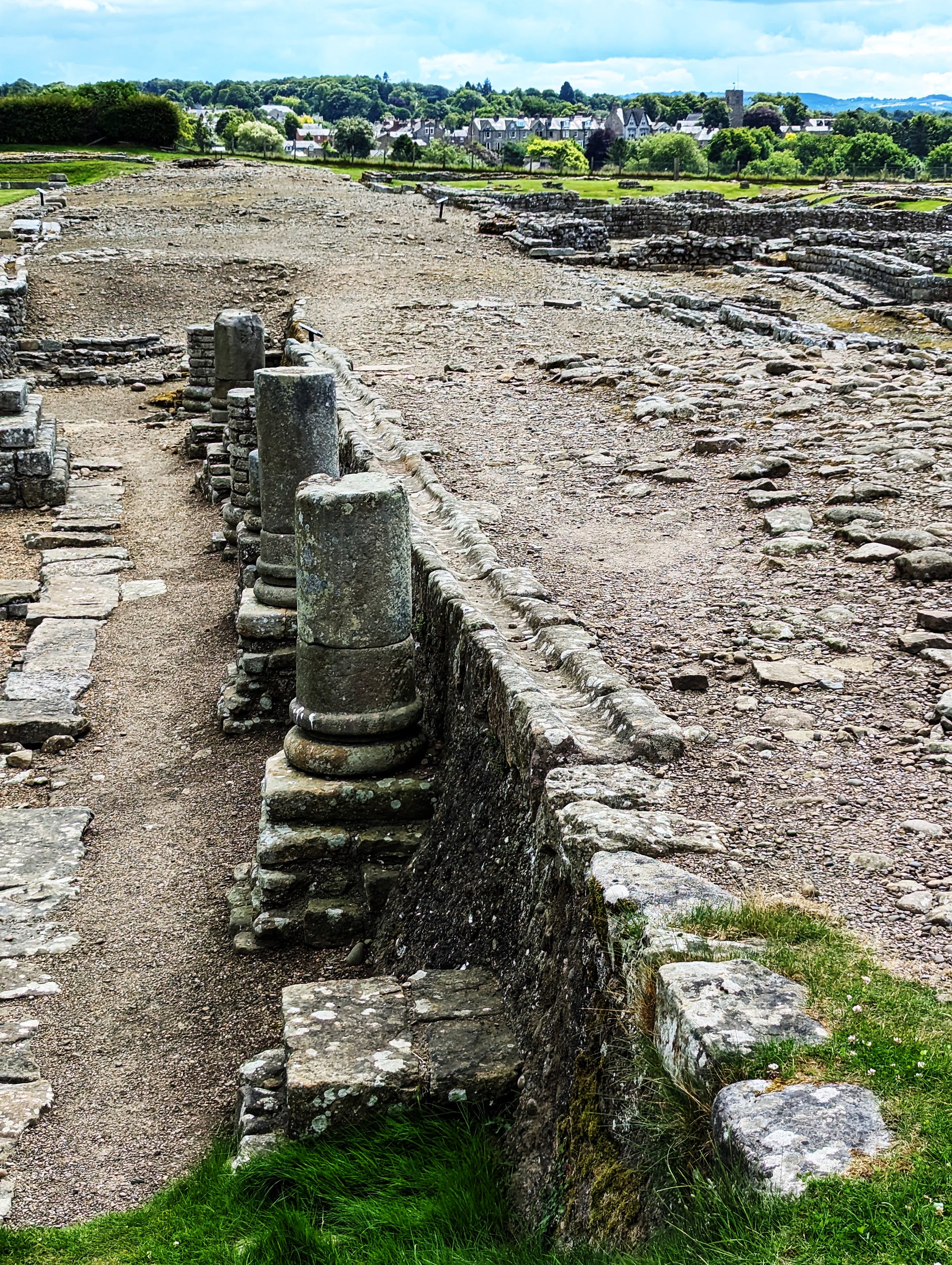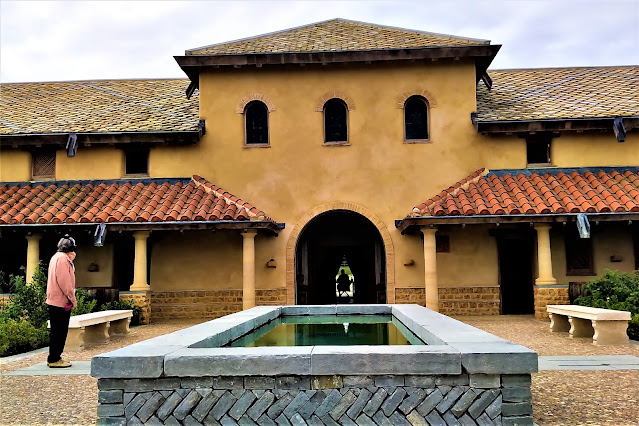Corbridge Lanx: Roman Treasure
Tonight, I am re-posting my Corbridge page with emphasis on a magnificent example of Roman silverware (above). The item was actually found by a child on bank of nearby River Tyne in 1735. There are records of other Roman silver pieces found in the same area during 1731-1760 but these were probably melted down.
River Tyne at Corbridge
The Corbridge hoard is one of many such hoards (e.g. Mildenhall) which date to the late 4th century/early 5th century AD when the Romans withdrew from Britain leaving the former colony without defence. After some 350 years of integration within the Roman Empire the sudden withdrawal must have resulted in a traumatic effect on Britain's trade, security and social structures. At this time many hoards of silver and other valuables were hidden by the wealthy elite in the hope of later recovery which never happened. On the plus side the Roman withdrawal resulted in unlimited immigration of peoples from northern Europe and concomitant development of the English language.
It is considered likely that the Corbridge hoard was deposited close to a bank of the River Tyne and released due to progressive erosion of that bank.
The item illustrated is a lanx or tray the decoration of which depicts a shrine to Apollo, the Greek god of music and health. The item may have been used to carry food but display of wealth was likely the principal purpose.
Here is a video clip of the item taken at the British Museum in London.
Here is rest of the post on Roman Corbridge.
Corbridge Lion in Museum at Corbridge Site
This morning I was able to re-visit the Roman site of Corbridge which is located about 20 miles west of Newcastle-upon-Tyne in Northern England.
Here is a summary of the site’s evolution from a military frontier post to a prosperous town:
- A fort just to the west of the present site was established in AD 79.
- A new fort on the current site was constructed in AD 84, probably for unit of cavalry. This was destroyed by fire in AD 105.
- A new fort was built in context of the open frontier then prevailing. This lasted until AD 120.
- A new fort, contemporary with the construction of Hadrian’s Wall and 4 km south of the Wall,was built to house an infantry garrison.
- A stone fort was built in AD 139 coinciding with the frontier centred on the newly constructed Antonine Wall.
- Corbridge ceased to be used as a base for auxiliary troops in AD 163, contemporary with re-commissioning of Hadrian’s Wall as the Northern Frontier of the Empire.
- Over the following fifty years Corbridge consolidated as a civilian town, probably with a small military unit at its centre.
- Around AD180 large scale civic building commenced including two granaries, a fountain house and forum or market.At this time Corbridge suffered an incursion by Northern tribes (hostile to Rome) which resulted in a significant damage to the town.
- Around AD 200 the granaries and fountain were completed. The town may have been used as a supply base for the army at this time.
- The town continued into the third and fourth centuries AD although scant information is available for this period. Most of this civilian centre is under fields close to the site and does not form part of the visible archaeology. During this period Corbridge may have been a supply base and support centre for the troops on Hadrian’s Wall.
- The site was occupied until collapse of Roman rule in the late 4th century AD.
The Museum on site at Corbridge contains a wide range of finds consistent with the long period of occupation summarised above. Here can be seen coins, pottery, altars and grave-markers. The most important find at Corbridge is the ‘Corbridge Hoard’. Inside the remains of a buried chest were a remarkable collection of objects which comprised armour, weapons, tools and implements, fittings and miscellaneous items.
Granaries
Civic Fountain
Site overview looking south
Site overview looking west
Site overview. Surface curvatures are due to re-building sinking into foundations of earlier construction.
Aspect of civic columns
Aspect of site looking east with modern Corbridge (dating from 1st millennia Saxon times) in distance.
Here are links to web pages for Roman Britain and Roman Scotland. Information on Hadrian's Wall and the Antonine Wall can be found in Visitors' Guide to Scotland.The ISBN is 978-1-9161332-0-4. This book is also available via Kindle.











Comments
Post a Comment